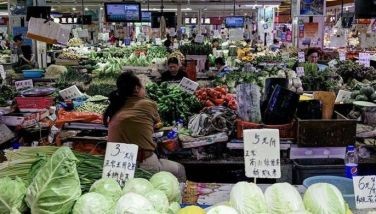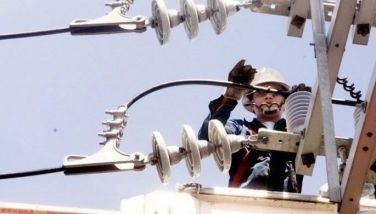The communist rebellion and our Republic

I have commented on the efforts of President Duterte to reach out to the NPA communist rebellion in this column. Peace negotiations were re-started shortly after he took office. (For example, Crossroads, May 25, 2016 and Aug. 3, 2016, Philippine Star.)
It was with President Duterte that peace with the communists appeared to have a good chance of reaching a successful end.
As mayor of Davao, he had reasonably good relations with the rebels on the ground. When he assumed the presidency, he invited some known persons who were communist sympathizers to his Cabinet.
However, intransigence and unreasonable demands of the communist negotiators have led to what appears to be a permanent break in the talks.
They demanded the release of all political prisoners even before they showed what they were willing to agree to.
In the same pattern of the negotiations, the communists have lost a chance to put closure to a long civil conflict with the Republic of the Philippines since independence in 1946.
That means the presidencies beginning with Manuel A. Roxas, a total of 11 up to Duterte in the history of nation. As a successor to the Huk communist rebellion, the NPA which was founded in the time of Ferdinand Marcos – lost its opportunity to conclude a waning rebellion under the five presidencies that followed.
Long road to a failed revolution. The communist rebellion in the country traces its roots to peasant discontent even before World War II.
The Huks. The Hukbalahaps were a guerilla communist peasant group that helped in the fight against the Japanese occupiers.
Luis Taruc led the Huks in an open rebellion against the government for years especially in Central Luzon. The Huk rebellion as a communist uprising was supported by the political bureau of Moscow-inspired communist doctrines.
However, in the early 1950s, the entire politburo was captured by the government, a singular feat that was attributed to the leadership of defense secretary Ramon Magsaysay, with help from the CIA.
The Maoist factor. During the 1960s, Mao’s China attempted to export revolution around the world, most notably in the neighborhood of Southeast Asia. East-West tensions during the Cold War were waged in surrogate wars in other countries – in Southeast Asia including in the Philippines.
In Indonesia, in 1965, a military coup that could have installed a communist government during Sukarno’s presidency led to a daring rescue undertaken by General Suharto to prop up Sukarno’s last years as president. Suharto neutralized the coup plotters and paved the way for his own succession as president.
Vietnam and the world. That period was also a time of large US involvement in the Vietnam civil war. American discontent about the buildup reached boiling point which eventually caused Lyndon Johnson not to seek reelection, an admission of failure and a signal for negotiation and defeat in war.
The corresponding turmoil in the Philippines took on a different track. Former president Ferdinand Marcos who was twice elected to serve as president during the period 1966 to 1972 faced demonstrations that grew from year to year.
Jose Ma. Sison, who by this time had become the chairman of the new Communist Party, was teaching from his own tract on revolution. By 1968, a military wing, the New People’s Army, was formed by Bernabe Buscayno to complement the political front.
NPA. To make a major impact on the course of Philippine history, the NPA executed the plan to bomb a major rally of the opposition Liberal Party campaign meeting in Plaza Miranda in August 1971. Confessions of NPA operatives subsequently traced the order to bomb the meeting on the communist leadership, who was Joma Sison.
It was widely believed that the two politicians who received the worst physical impairment from this bombing – Liberal Senators Jovito Salonga and Eva Kalaw-Katigbak – have accepted this explanation.
The ferocity of the mass demonstrations during the so-called First Quarter Storm (1970) and the Plaza Miranda bombing the following year were the two big events that tipped the point of decision by Marcos to declare martial law by September 1972.
The military campaign against the NPA rebellion initially led to an exodus of new NPA recruits to the hills and country-sides and an intensification of the military campaign. Over time, however, the government had been winning the war. By the time of the capture of Joma Sison in 1977, a lot of the NPA leaders had either surrendered or had been captured or killed.
Economic and political crisis, 1983. The tide would turn with the assassination of Ninoy Aquino in 1983. An economic and political crisis ensued. A different factor in the equation – a collapse of the economy and an economic depression – came about from lack of emergency international support when it was needed badly.
The two-year drop in output wiped out economic achievements that were attained in earlier years. It would take time to recover from such a disaster and it assured that a change in government was forthcoming.
People Power in 1986 made the fall of Marcos definite. Political alliance between Corazon Aquino and the leadership of the communist party lasted only a short time. Then the relationship became one of of hostility.
My email is: [email protected]. Visit this site for more information, feedback and commentary: http://econ.upd.edu.ph/gpsicat/
- Latest
- Trending































